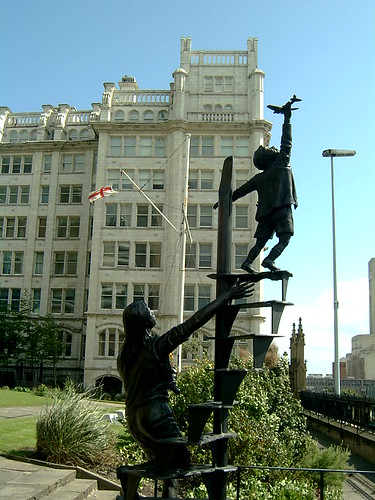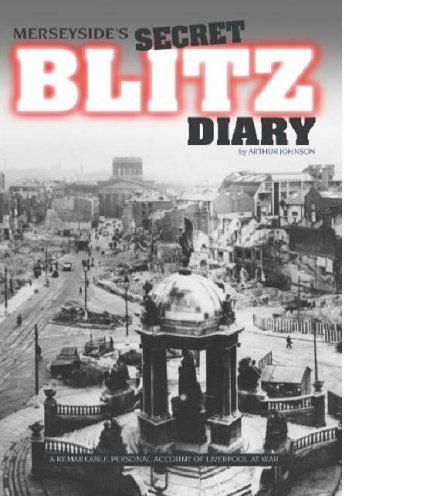
Liverpool Blitz Memorial by Tom Murphy, St. Nicholas's Churchyard, Liverpool
I recently had an exchange on a poetry forum with a fellow poet who thought that the word "Blitz" should only be applied to the German Blitzkrieg aerial attack on Poland in 1939. Tell that to the people of Merseyside who suffered greatly during the German bombing of the port of Liverpool and the shipyards of Birkenhead during 1941. Also hit during the attacks was Liverpool's elegant Gothic St. Luke's Church, which was gutted by an incendiary shell just after midnight on May 6, 1941. The church has never rebuilt but has been left as a memorial to those who died in the Blitz of the Second World War.
An acquaintance of mine on the Yo! Liverpool forum has now started a website on the church. Go to St Luke's "The Bombed-Out Church" at http://www.stlukeliverpool.co.uk/. The church is also covered in an article in the local press today "Former glory of Liverpool's ‘bombed out’ church found after 80 years" by William Leece, Liverpool Daily Post, June 14, 2010 (access the article through the title above).

A recent book on the damage sustained by the area during the Blitz is Merseyside's Secret Blitz Diary--Liverpool at War by Arthur Johnson. This supposed reproduction of a World War II diary kept by a Merseyside journalist might be totally on the up and up, although I am a bit leery given the questionable Maybrick "Jack the Ripper" Diary and the Bridget Hitler diary as well... and the mocked up Hitler Diaries that were exposed as a hoax after they were sold to Der Spiegel. Is Merseyside's Secret Blitz Diary a bit too good to be true?
The book was published in paperback in 2005. The book, reproducing the typed pages from the diary, was brought out with an introduction by the author's son who himself became a journalist but never knew his father -- Arthur Johnson Sr. died of disease while serving in the Royal Navy later in the war. It seems to be unexplained how the Diary, hidden at the time because it would have been forbidden to keep such a diary of local war-related happenings, came to light.
The narrator seems to know too much, right at the time, and there are also "add-ons" adding additional information that might not have been known till years later.
Possibly I am being too suspicious but I do think the document bears some scrutiny. For more on the book go to "Story of Merseyside's secret blitz."
The Day War Broke Out Evening Express
On the newspaper my Grandad
bought one evening in 1939,
the print is rubbed off along the folds
after a duration in successive drawers
in successive dressing tables
but the headline BRITAIN AT WAR
still stands out
like a burst of shrapnel
in a clear sky.
Half the front page is filled
with German troop movements in Poland
and the Prime Minister's announcement
broadcast at 11:15 a.m from Dowing Street:
"I have to tell you now
that no such undertaking has been received...
we will fight brute force, bad faith, and oppression..."
At top left, an announcement in red ink, to say
"Mervyn Russell's Film Fan Fare" is on page 4.
At the bottom of the page,
T. W. Garnett, sole survivor of the first test
match between England and Australia, has turned 81,
and J. L. Coleman has holed what's believed
to be the worlds longest putt from 220 yards.
An 18-year-old playing his first league match
has scored the winning goal
for Liverpool, first in the First Division,
against Chelsea, placed eleventh;
the season is one week old.
Miss Mollie Bowdler has married Walter Roberts
at St. Luke's Church; she wore a crinoline gown
of white lace and carried a bouquet
of red roses and lilies of the valley.
Christopher T. George
Monday, June 14, 2010
The Blitz in Liverpool
Posted by
Christopher T. George
at
11:00 AM
![]()
Subscribe to:
Post Comments (Atom)
No comments:
Post a Comment